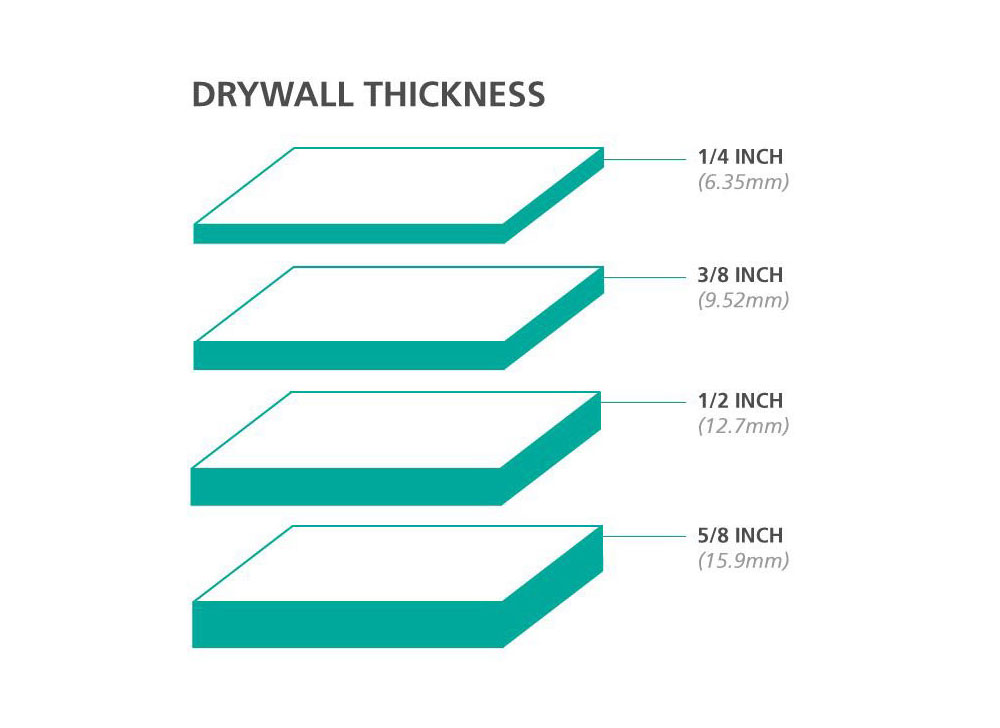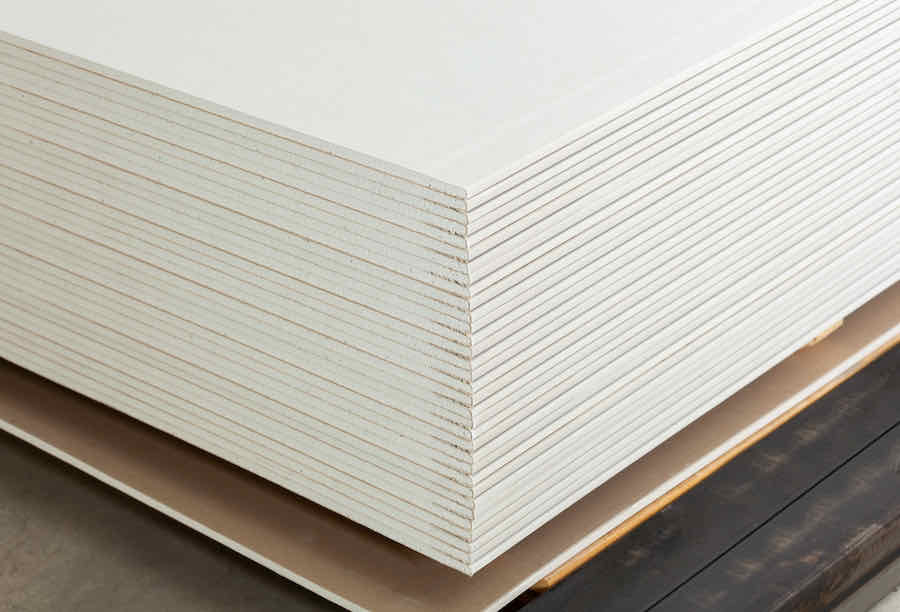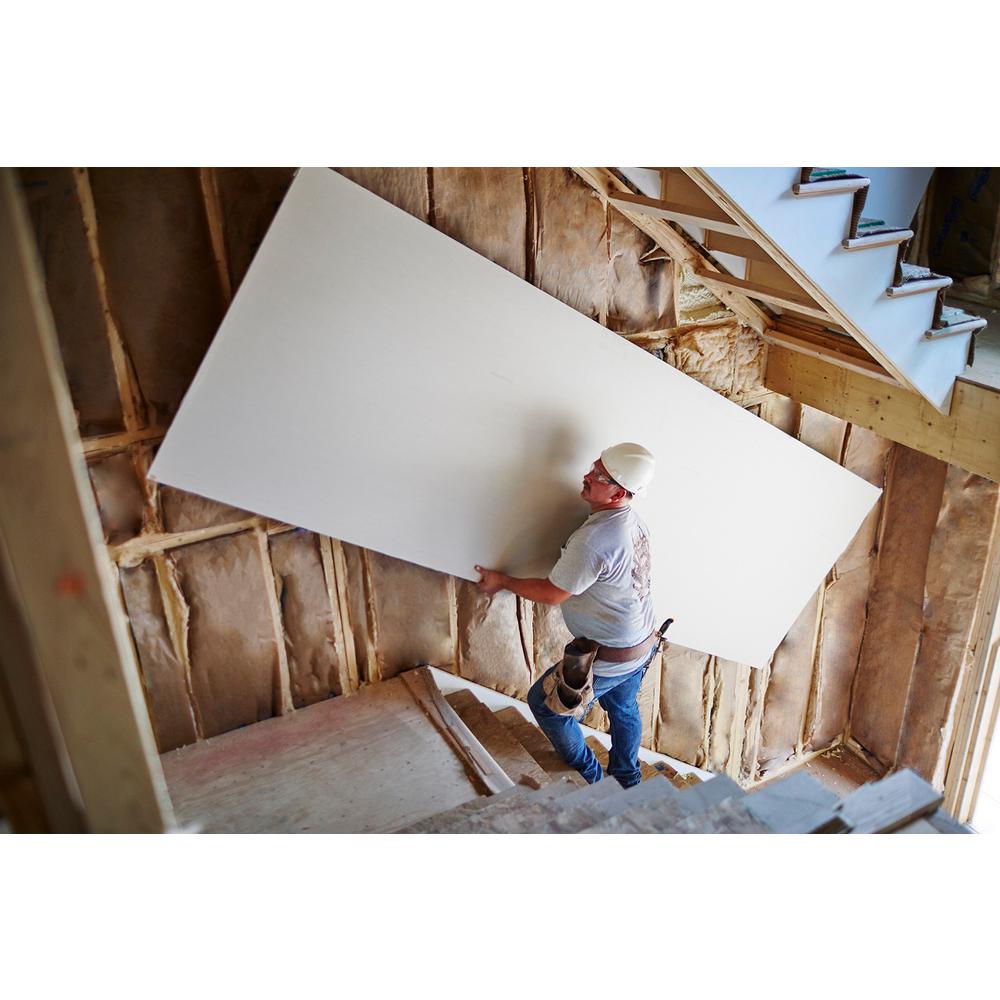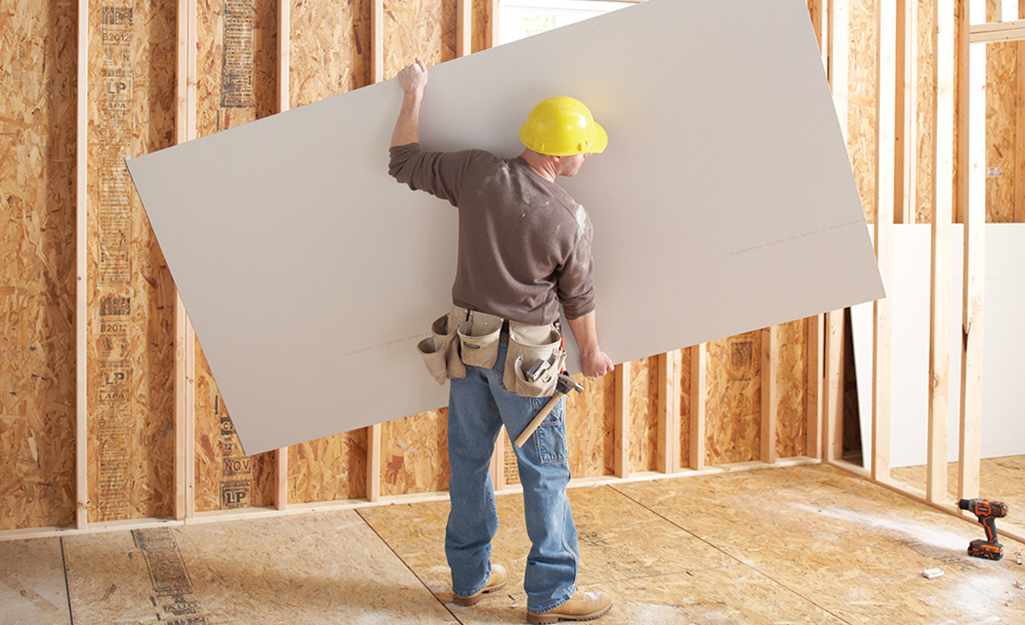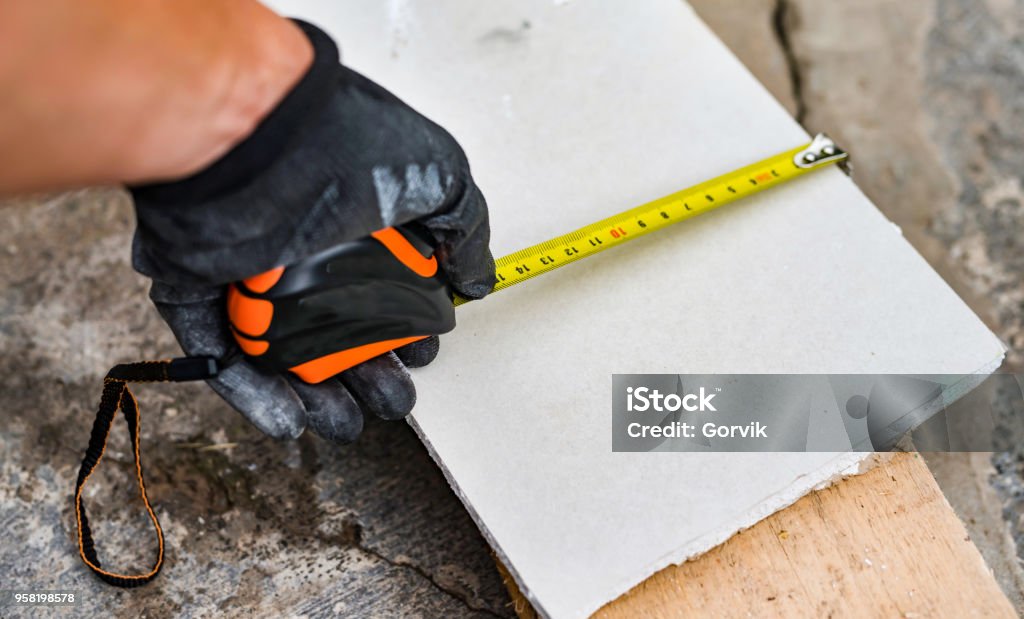How Long Is A Sheet Of Drywall - To get an accurate estimate of the drywall sheets you need, multiply the length and width of your surfaces and divide by the square footage of the drywall sheet you are using. A butted seam is created. Building codes almost never require a specific length and width for drywall sheets (although they sometimes do require a certain thickness). The most common size of drywall is 4 feet wide and 8 feet long. Drywall’s popularity in the building industry comes from its standardized sizes, which make planning and installation easier while keeping costs down through efficient. Longer lengths help eliminate or reduce the number of butted seams, or butt joints. Rather, it’s up to you to select the.
The most common size of drywall is 4 feet wide and 8 feet long. To get an accurate estimate of the drywall sheets you need, multiply the length and width of your surfaces and divide by the square footage of the drywall sheet you are using. Building codes almost never require a specific length and width for drywall sheets (although they sometimes do require a certain thickness). A butted seam is created. Longer lengths help eliminate or reduce the number of butted seams, or butt joints. Rather, it’s up to you to select the. Drywall’s popularity in the building industry comes from its standardized sizes, which make planning and installation easier while keeping costs down through efficient.
Longer lengths help eliminate or reduce the number of butted seams, or butt joints. Drywall’s popularity in the building industry comes from its standardized sizes, which make planning and installation easier while keeping costs down through efficient. The most common size of drywall is 4 feet wide and 8 feet long. To get an accurate estimate of the drywall sheets you need, multiply the length and width of your surfaces and divide by the square footage of the drywall sheet you are using. Rather, it’s up to you to select the. Building codes almost never require a specific length and width for drywall sheets (although they sometimes do require a certain thickness). A butted seam is created.
Drywall Sheet
Rather, it’s up to you to select the. Longer lengths help eliminate or reduce the number of butted seams, or butt joints. A butted seam is created. To get an accurate estimate of the drywall sheets you need, multiply the length and width of your surfaces and divide by the square footage of the drywall sheet you are using. The.
How thick is drywall? A guide for drywall size (length and height included)
To get an accurate estimate of the drywall sheets you need, multiply the length and width of your surfaces and divide by the square footage of the drywall sheet you are using. The most common size of drywall is 4 feet wide and 8 feet long. Longer lengths help eliminate or reduce the number of butted seams, or butt joints..
Drywall Sizes Everything You Need to Know DIY Painting Tips
Drywall’s popularity in the building industry comes from its standardized sizes, which make planning and installation easier while keeping costs down through efficient. The most common size of drywall is 4 feet wide and 8 feet long. A butted seam is created. To get an accurate estimate of the drywall sheets you need, multiply the length and width of your.
Drywall Sheets Drywall The Home Depot
Longer lengths help eliminate or reduce the number of butted seams, or butt joints. A butted seam is created. To get an accurate estimate of the drywall sheets you need, multiply the length and width of your surfaces and divide by the square footage of the drywall sheet you are using. Rather, it’s up to you to select the. Building.
The GoTo Guide for Drywall Size and Thickness by Williams Brothers
The most common size of drywall is 4 feet wide and 8 feet long. To get an accurate estimate of the drywall sheets you need, multiply the length and width of your surfaces and divide by the square footage of the drywall sheet you are using. A butted seam is created. Longer lengths help eliminate or reduce the number of.
Free Drywall Calculator Construction Calculators
A butted seam is created. Drywall’s popularity in the building industry comes from its standardized sizes, which make planning and installation easier while keeping costs down through efficient. The most common size of drywall is 4 feet wide and 8 feet long. Rather, it’s up to you to select the. Building codes almost never require a specific length and width.
Sheetrock Sizes For Ceilings Shelly Lighting
Longer lengths help eliminate or reduce the number of butted seams, or butt joints. Building codes almost never require a specific length and width for drywall sheets (although they sometimes do require a certain thickness). Rather, it’s up to you to select the. A butted seam is created. The most common size of drywall is 4 feet wide and 8.
How thick is drywall? A guide for drywall size (length and height included)
To get an accurate estimate of the drywall sheets you need, multiply the length and width of your surfaces and divide by the square footage of the drywall sheet you are using. Building codes almost never require a specific length and width for drywall sheets (although they sometimes do require a certain thickness). Drywall’s popularity in the building industry comes.
The Process Of Measuring The Length Of A Sheet Of Drywall Stock Photo
Longer lengths help eliminate or reduce the number of butted seams, or butt joints. To get an accurate estimate of the drywall sheets you need, multiply the length and width of your surfaces and divide by the square footage of the drywall sheet you are using. Rather, it’s up to you to select the. The most common size of drywall.
Drywall Dimensions Standard Lengths, Widths, and Thicknesses
To get an accurate estimate of the drywall sheets you need, multiply the length and width of your surfaces and divide by the square footage of the drywall sheet you are using. Drywall’s popularity in the building industry comes from its standardized sizes, which make planning and installation easier while keeping costs down through efficient. Building codes almost never require.
Rather, It’s Up To You To Select The.
Building codes almost never require a specific length and width for drywall sheets (although they sometimes do require a certain thickness). Longer lengths help eliminate or reduce the number of butted seams, or butt joints. To get an accurate estimate of the drywall sheets you need, multiply the length and width of your surfaces and divide by the square footage of the drywall sheet you are using. Drywall’s popularity in the building industry comes from its standardized sizes, which make planning and installation easier while keeping costs down through efficient.
A Butted Seam Is Created.
The most common size of drywall is 4 feet wide and 8 feet long.
:max_bytes(150000):strip_icc()/How-to-estimate-drywall-step-by-step-tutorial-844379_final-6b2cf9605fa7497bba9222a1f50bc055.png)
